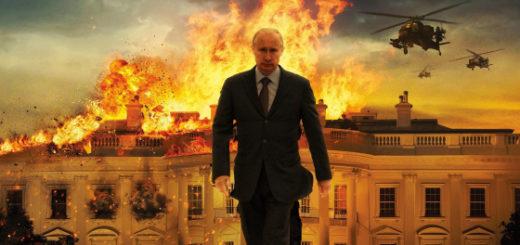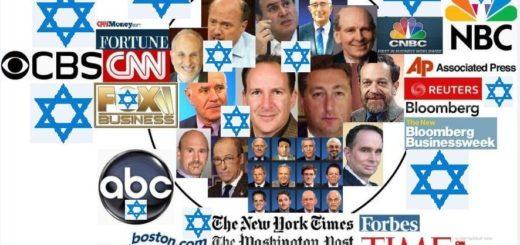What War With North Korea Looked Like in the 1950s and Why It Matters Now

The brutality of the Korean War has largely been overlooked by U.S. history, but the conflict has long shaped Washington’s troubled political relationship, or lack thereof, with North Korea. As President Donald Trump and North Korean leader Kim Jong Un threaten to ignite a new battle in the region, the scars of the past seem to resonate more powerfully in the Korean Peninsula than in the West.
During the course of the three-year war, which both sides accuse one another of provoking, the U.S. dropped 635,000 tons of explosives on North Korea, including 32,557 tons of napalm, an incendiary liquid that can clear forested areas and cause devastating burns to human skin. (In constrast, the U.S. used 503,000 tons of bombs during the entire Pacific Theater of World War Two, according to a 2009 study by the Asia-Pacific Journal.) In a 1984 interview, Air Force Gen. Curtis LeMay, head of the Strategic Air Command during the Korean War, claimed U.S. bombs “killed off 20 percent of the population” and “targeted everything that moved in North Korea.” These acts, largely ignored by the U.S.’ collective memory, have deeply contributed to Pyongyang’s contempt for the U.S. and especially its ongoing military presence on the Korean Peninsula.
“Most Americans are completely unaware that we destroyed more cities in the North then we did in Japan or Germany during World War II… Every North Korean knows about this, it’s drilled into their minds. We never hear about it,” historian and author Bruce Cumings told Newsweek by email Monday.
Keep up with this story and more by subscribing now
Related: What War with North Korea Looks Like
Cumings outlined his controversial revision of the U.S.’ account of the conflict in 1980’s award-winning book “The Origins of the Korean War,” which was followed in 1991 by a second volume that also received an international literary prize. He charges the U.S. with the indiscriminate carpet bombing of North Korean cities, which led to significant civilian deaths throughout Washington’s effort to cleanse the Korean Peninsula from communist forces sponsored by Cold War foes, the Soviet Union and China. These underreported atrocities, the extent of which have been debated among experts, were formative to North Korean society, in which nearly every aspect of life is influenced by government ideology to some degree, and glossed over in most U.S. history books.
“Americans generally, and that includes most of our leaders, don’t understand or know much about the Korean War, whereas the North Koreans are laser-focused on everything that’s happened since the U.S. occupied South Korea in 1945,” Cumings told Newsweek. “That sets up a very dangerous situation, where the two countries are like ships passing in the night, not understanding the other side, and therefore not really knowing the enemy and what they are after.”
The origins of the war have also been obscured in the West. Korea was divided in 1945 following the defeat in World War Two of the Japanese Empire that occupied the Peninsula. The territory was split between the Soviet Union in the north and the U.S. in the south. The victorious superpowers of World War Two once fought alongside one another, but quickly became rivals based on opposing ideologies. Traditional U.S. accounts of the conflict begin with the North Korean army storming South Korean positions in June 1950 under the command of current leader Kim Jong Un’s grandfather, Kim Il Sung, and his Soviet allies. It is important to note, however, that this offensive was preceded by the harsh repression of leftists by the right-wing, U.S.-backed government of South Korean President Syngman Rhee in the 1940s.
Within the first months, North Korean troops took 90 percent of the Peninsula, forcing the poorly-trained U.S. and U.N.-backed soldiers to a small southeastern bastion known as the Pusan Perimeter. The U.S.’ direct intervention, especially an amphibious assault on the North Korea-occupied port city of Incheon in September, turned the tides of the conflict and eventually pushed Kim Il Sung’s army past the previously established border between the nations and up closer to North Korea’s border with China. The rapid losses provoked a Chinese intervention in October 1950, which then pushed the U.S. and South Korean forces back down near the existing international border.
After two more years of fighting, but little exchange of territory, the warring parties ultimately established an armistice in July 1953 near the 38th parallel and a demilitarized zone surrounding it on both sides. After the death of over 36,000 U.S. soldiers, hundreds of thousands of Chinese and millions of Koreans, mostly from the North, the global powers declared a ceasefire. However, no “final peaceful settlement” was achieved between North Korea and South Korea, meaning the two nations officially remain at war.
While the conflict has rarely received the same amount of attention as the U.S.’ two major conflicts, World War Two and the Vietnam War, that occurred before and after it, respectively, conditions were particularly brutal for combatants. Extreme weather and lack of supplies plagued troops loyal to both factions, as did accusations of war crimes. Days into the war, Rhee executed scores of individuals suspected of having ties to leftism and socialism. Kim Il Sung, on the other hand, ordered purges of academics and other educated individuals. Besides the U.S.’ aerial assaults on populated urban centers, the Army was also allegedly involved in the direct targeting of civilians, such as the No Gun Ri massacre that killed at least 100 and possibly hundreds of refugees. While no participant in the war has been particularly forthcoming with admissions of its own potential crimes, Pyongyang has used the U.S.’ unwillingness to admit its ugly past as fuel for its own rhetoric.
After the war, North Korea’s characterization of the U.S. as evil imperialists on the verge of invading was further corroborated in Pyongyang’s view by U.S. interventions against communist powers in Vietnam and Grenada and later against Middle Eastern leaders in Iraq and Libya. North Korea’s answer was to develop a nuclear deterrent, a program begun sometime in the 1980s under Kim Il Sung and steadfastly pursued by his heirs in the face of near unilateral condemnation abroad, which extends to Pyongyang’s traditional ally, China.
Beijing, which sent waves of troops against U.S. forces during the Korean War, has since embraced many aspects of capitalism and free market familiar to Americans. Fellow former U.S. foe Vietnam has, as well. Going further back, the successor states of Nazi Germany and Imperial Japan have become democratic, staunch U.S. allies. On the other hand, North Korea, despite undergoing significant reforms, remains under the reclusive, authoritarian Kim dynasty and a mix of Western media bias and North Korea’s own tight grip on information has led to significant misunderstandings and misportrayals of the country in the U.S., according to Jenny Town, assistant director of North Korea monitoring group 38 North.
“North Korea is still this reclusive state that people don’t know much about, they’re still the enemy [in people’s minds],” Town, whose father fought with the U.S. Army in the Korean War, told Newsweek. “It’s just so unfamiliar to them.”
Frequent characterizations of Kim Jong Un, like his father and grandfather before him, as an irrational despot or even cartoonish, quirky leader have persisted “because it’s easier,” according to Town, than grasping the nuanced reality of a conflict in which things were rarely black and white. Since the Korean War ended over a half century ago, North Korea’s poor human rights record and military expansion have received extensive media coverage, while Kim Jong Un’s efforts to stabilize the economy have gone relatively underreported.
With Trump and Kim, two heads of state who have been pictured as buffoonish and incompetent in world media despite their very serious access to nuclear weapons arsenals, heading toward a possible showdown, they may learn something from each other’s accounts of the last major war between the two nations. But that may be a difficult task for Kim now.
As of Wednesday, the official page dedicated to the Korean War at the State Department’s Office of the Historian website, remained down, with only a brief message saying it was “pending review to ensure it meets our standards for accuracy and clarity.”














